SOG versus STW
Why doesn't my satellite navigation speed match my boat's log speed? A good question with more than one answer. Here are five points why speed over the ground often differs from speed through the water.
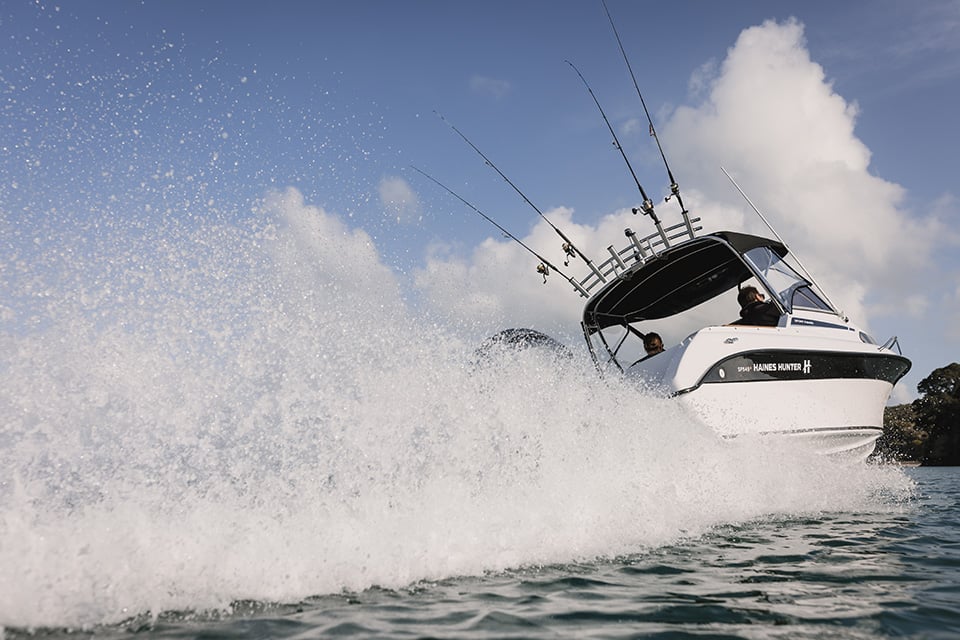
Why SOG and STW?
Satellite receivers measure actual speed against the Earth itself – they calculate what is called Speed over the Ground or 'SOG' for short. If it’s more straightforward to think about, remember this as ‘speed over the chart’.
A speed instrument measures the boat's Speed Through the Water – abbreviated 'STW'.
If the water in which your boat is floating moves over the Earth due to tidal or river currents, there will be a difference between the speed your satellite navigator calculates (SOG) and the pace measured by your speed instrument (STW). Differences between SOG and STW may also occur due to other effects on your boat, such as the impact of waves and strong winds.
In our simple example here, a motor yacht is moving at 21.9 knots speed measured through the water (STW) but has 1.1 knots of tidal current against it, indicating it is only progressing at 20.8 knots speed over the ground (SOG). You can see both numbers in the display as observed on a Simrad® IS 42 Colour Instrument Display.
Any variation between SOG and STW tells you whether you are getting assistance from wind and tide or are being slowed up by them, affecting your planned arrival time and fuel consumption.
By accurately measuring your progress through the water, you can assess progress to ensure you don’t miss critical arrival times like a tidal window, bridge or lock opening. Being aware of the impact of tidal currents also assists with reducing your environmental footprint.
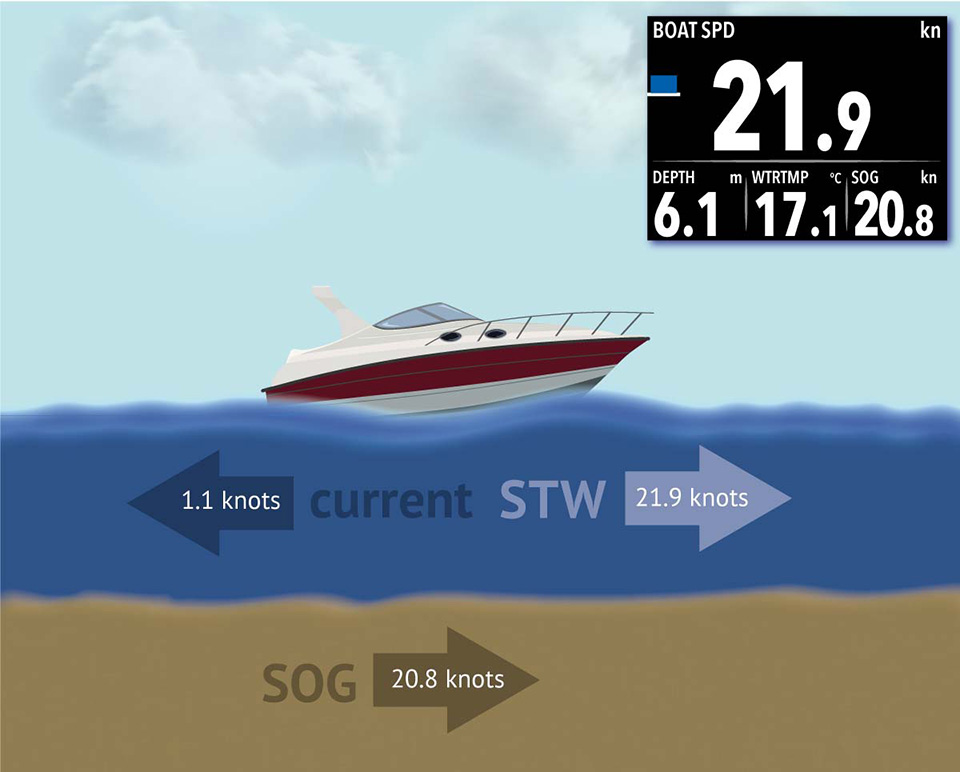
Measuring speed through the water
A speed instrument (often still called a log) uses a transducer mounted either through the hull or on the transom. Simrad Yachting also offers multi-purpose transducers such as the DST 800 that combine speed, depth and temperature measurement, reducing installation and maintenance time.
The most common type of speed transducer uses a small paddlewheel that freewheels in the water flow (see illustration here), turning in ratio to the boat’s speed through the water. Magnets in the paddlewheel generate electrical pulses that are converted to a speed indication.
A paddlewheel transducer’s biggest enemy is a build-up of slime and weed or even tiny sea creatures taking up residence in the void above the paddlewheel, which can slow or stop the reading. You'll need to keep the paddlewheel clean and rotating freely to work effectively.
Never coat your transducer in normal antifouling - you can get special water-basedcoatings for the job, but be careful not to clog the axle of a paddlewheel – it should spin freely without any drag.
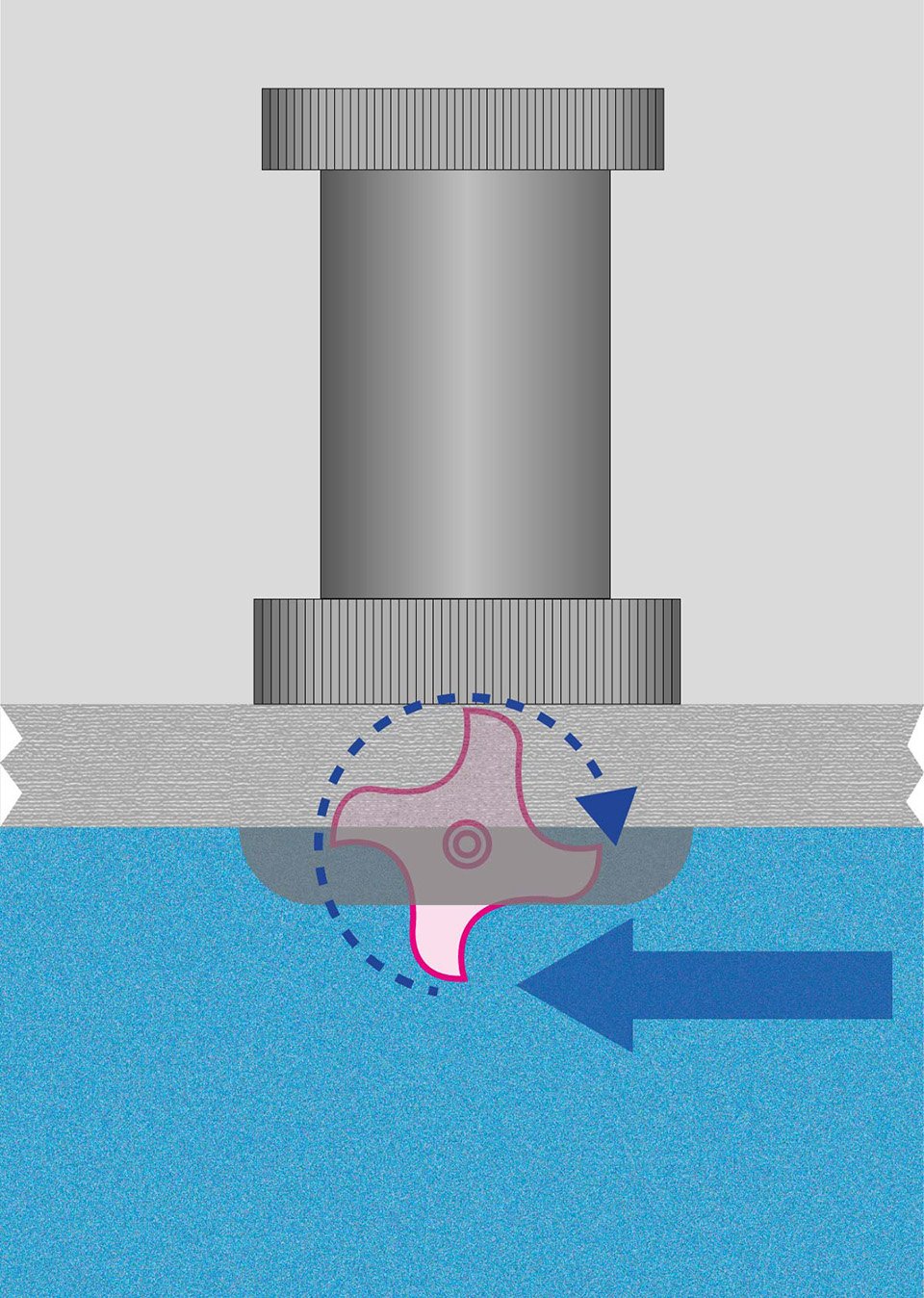
Errors in speed readings
Even if your transducer is clean, there could well be variations in your log's STW reading compared to your boat's actual speed through the water. This can be caused by how much water flow is disturbed by the hull design, condition of the hull and effect of propellers. You can add a correction factor within your marine electronics to adjust for inaccuracies.
The ability of a user to calibrate the transducer can also be a reason for errors. If you are taking on a boat with an existing speed instrument and feel it is reading incorrectly, reset it and start again.
Calibrating your speed instrument
In calm conditions and with no current, you should be able to calibrate your STW by using GPS-derived SOG with a simple test.
Find some open water where you won't break limits or cause an issue for anyone else. Hold a course at a set speed for long enough that the GPS and log settle on their respective readings, then note both. Try this over various speeds as inaccuracies can be different up and down cruising settings.
If there is a current of any kind, run the tests with the boat headed into the stream or tide, note the SOG and STW, then immediately double back on the reciprocal course to where you started and note again. Your answer for each speed setting will be the average of the two runs.
Speed instrument calibration example
In our example here the boat runs both ways between two waypoints spaced one nautical mile apart at an indicated speed of 23 knots through the water. The course is plotted so that it is in line with the direction of any current. We’ve chosen a calm day to rule out any significant effect from the wind.
On leg 1 the boat approaches waypoint 001 already at 23 knots indicated STW. For this leg let’s say the time taken to reach waypoint 2 is 2min 52sec. That equates to an actual speed over the ground of (SOG) of 20.9 knots.
On leg 2 the boat approaches waypoint 001 already at 23 knots indicated STW. For this leg let’s say the time taken to reach waypoint 2 is 2min 34sec. That equates to an actual speed over the ground of (SOG) of 23.3 knots.
To cancel out the effect of the tide, we add both measurements and average them. So in this case 20.9+23.3 = 44.2 / 2 = 22.1 knots.
From this calculation, we can see our boat’s speed sensor is over-reading by 23.0-22.1 = 0.9 knots.
As we noted earlier, errors can change according to speed, so do further runs for several speed settings, following the same procedure. You can then calibrate your STW values using these measurements. Also, keep a note of your readings for future reference.
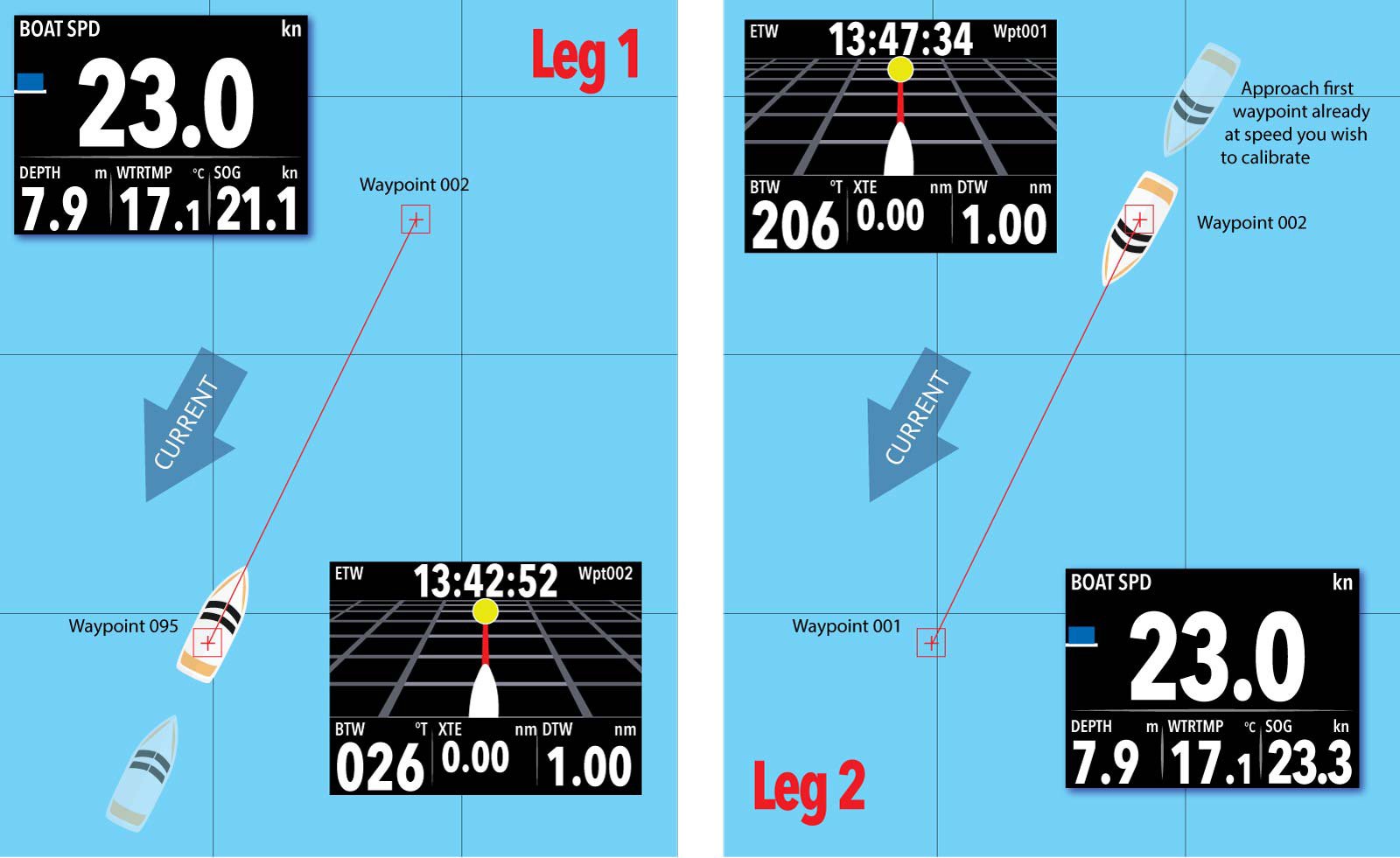
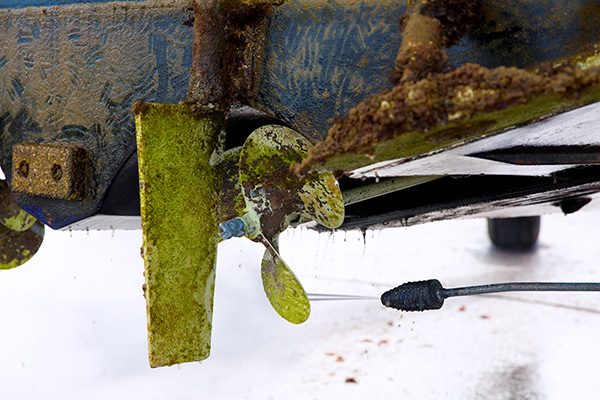
Why you might see changes over time
There could be other reasons why STW is not as expected for a given throttle setting. Influencing factors include:
- extra load
- hull fouling
- an engine issue
- propeller damage
In all of these cases, you will also see a change in SOG.
If you are seeing increasing variation between STW and SOG, then:
- check your transducer
- if your transducer seems okay check your boat's satellite antenna has a clear 360° view of the sky and look at whether it is otherwise giving consistent position information.
One of the keys to safe boating is to establish what is expected, so you can later question and test anything outside those norms. A little time and attention on understanding your boat’s indicated speeds is always a valuable extra source of information.
















